BMW X6 VS Dacia Spring – Specs, Efficiency & Price Comparison
Which model is the better choice – the BMW X6 or the Dacia Spring? We compare performance (625 HP vs 65 HP), boot capacity (580 L vs 308 L), efficiency (7.10 L vs 13.20 kWh), and of course, the price (83600 £ vs 14500 £).
Find out now which car fits your needs better!
The BMW X6 (SUV) is powered by a Diesel MHEV or Petrol MHEV engine and comes with a Automatic transmission. In comparison, the Dacia Spring (SUV) features a Electric engine and a Automatic gearbox.
When it comes to boot capacity, the BMW X6 offers 580 L, while the Dacia Spring provides 308 L – depending on what matters most to you. If you’re looking for more power, you’ll need to decide whether the 625 HP of the BMW X6 or the 65 HP of the Dacia Spring suits your needs better.
There are also differences in efficiency: 7.10 L vs 13.20 kWh. In terms of price, the BMW X6 starts at 83600 £, while the Dacia Spring is available from 14500 £.
Compare all the key specs now and find out which model fits your lifestyle best!
BMW X6
The BMW X6 stands out with its distinctive coupe-like silhouette, merging the elegance of a sports car with the commanding presence of an SUV. Inside, the luxurious cabin offers premium materials and cutting-edge technology, ensuring that both driver and passengers travel in comfort and style. The vehicle's agile handling and robust performance make it a favourite among those who seek both aesthetics and driving dynamism.
details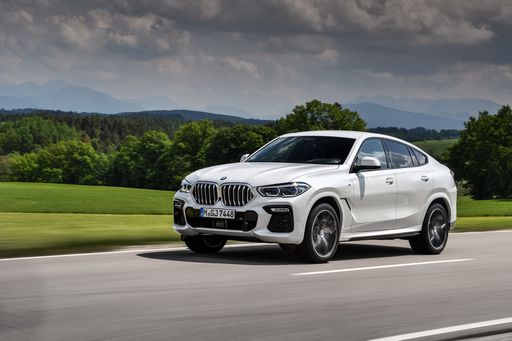 @ press.bmwgroup.com
@ press.bmwgroup.com
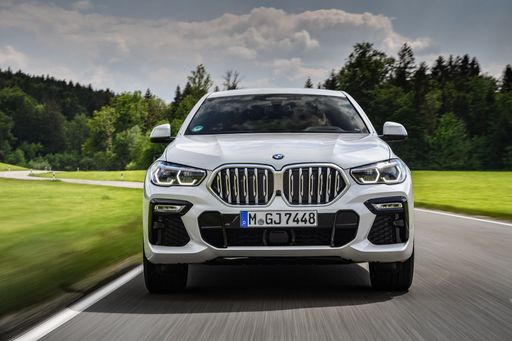 @ press.bmwgroup.com
@ press.bmwgroup.com
 @ press.bmwgroup.com
@ press.bmwgroup.com
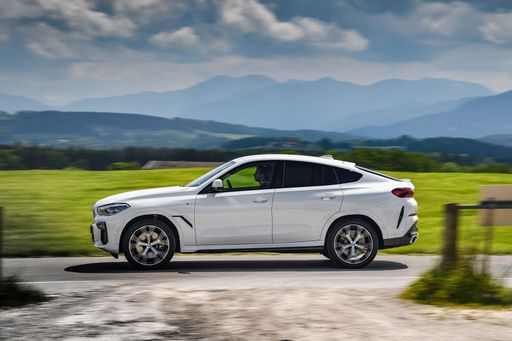 @ press.bmwgroup.com
@ press.bmwgroup.com
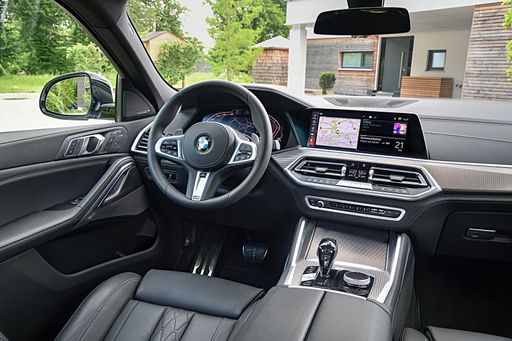 @ press.bmwgroup.com
@ press.bmwgroup.com
Dacia Spring
The Dacia Spring stands out as an affordable and environmentally friendly option in the electric vehicle market, combining practicality with a compact design ideal for urban settings. Its minimalist interior, while basic, provides all the essential features needed for a comfortable drive, reflecting its cost-effective approach. The vehicle's performance suits city driving, making it an appealing choice for those seeking an entry-level electric car.
details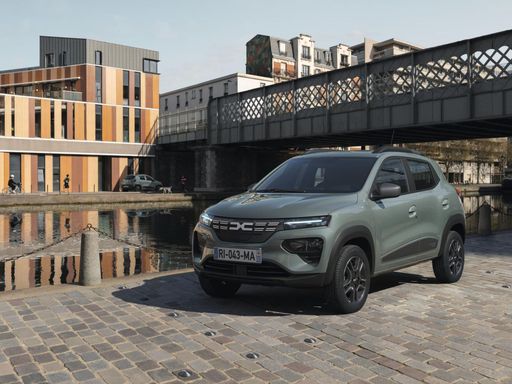 @ dacia-presse.de
@ dacia-presse.de
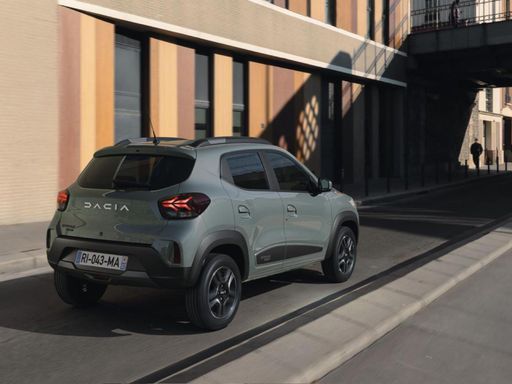 @ dacia-presse.de
@ dacia-presse.de
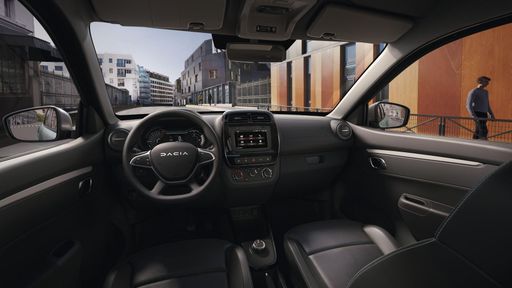 @ dacia-presse.de
@ dacia-presse.de

|

|
|
|
|
Costs and Consumption |
|
|---|---|
|
Price
83600 - 146400 £
|
Price
14500 - 17100 £
|
|
Consumption L/100km
7.1 - 12.7 L
|
Consumption L/100km
-
|
|
Consumption kWh/100km
-
|
Consumption kWh/100km
13.2 - 14.1 kWh
|
|
Electric Range
-
|
Electric Range
225 - 228 km
|
|
Battery Capacity
-
|
Battery Capacity
26.80 kWh
|
|
co2
187 - 288 g/km
|
co2
0 g/km
|
|
Fuel tank capacity
80 - 83 L
|
Fuel tank capacity
-
|
Dimensions and Body |
|
|---|---|
|
Body Type
SUV
|
Body Type
SUV
|
|
Seats
5
|
Seats
4
|
|
Doors
5
|
Doors
5
|
|
Curb weight
2240 - 2445 kg
|
Curb weight
1013 - 1050 kg
|
|
Trunk capacity
580 L
|
Trunk capacity
308 L
|
|
Length
4948 - 4960 mm
|
Length
3701 mm
|
|
Width
2004 - 2019 mm
|
Width
1583 mm
|
|
Height
1695 - 1700 mm
|
Height
1519 mm
|
|
Payload
595 - 695 kg
|
Payload
265 - 302 kg
|
Engine and Performance |
|
|---|---|
|
Engine Type
Diesel MHEV, Petrol MHEV
|
Engine Type
Electric
|
|
Transmission
Automatic
|
Transmission
Automatic
|
|
Transmission Detail
Automatikgetriebe
|
Transmission Detail
-
|
|
Drive Type
All-Wheel Drive
|
Drive Type
Front-Wheel Drive
|
|
Power HP
298 - 625 HP
|
Power HP
44 - 65 HP
|
|
Acceleration 0-100km/h
3.9 - 6.1 s
|
Acceleration 0-100km/h
13.7 - 19.1 s
|
|
Max Speed
235 - 250 km/h
|
Max Speed
125 km/h
|
|
Torque
540 - 750 Nm
|
Torque
113 - 125 Nm
|
|
Number of Cylinders
6 - 8
|
Number of Cylinders
-
|
|
Power kW
219 - 460 kW
|
Power kW
33 - 48 kW
|
|
Engine capacity
2993 - 4395 cm3
|
Engine capacity
-
|
General |
|
|---|---|
|
Model Year
2023
|
Model Year
2024
|
|
CO2 Efficiency Class
G
|
CO2 Efficiency Class
A
|
|
Brand
BMW
|
Brand
Dacia
|
BMW X6
Introduction to the BMW X6
The BMW X6 stands as a striking example of automotive innovation, blending power with luxury. This sports activity coupe (SAC) seamlessly fuses the dynamics of a coupe with the robust presence of an SUV. As part of BMW's acclaimed X Series, the X6 continues to captivate with its athletic traits and cutting-edge technology.
Innovative Features and Design
The BMW X6 is a visual tour de force with its unmistakable silhouette, accentuated by a sculpted bonnet and dynamic contours. This elegance is matched by its functionality, providing a spacious interior with a luxurious finish, highlighted by high-quality materials and the latest infotainment technology. The user-centric iDrive system offers intuitive control, enhancing the driving experience through an immersive digital interface.
Performance and Powertrain
Under the bonnet, the BMW X6 offers a range of powerful engines, showcasing both diesel and petrol mild-hybrid configurations. With outputs ranging from 298 to a commanding 625 PS, the X6 delivers exhilarating performance, combined with intelligent all-wheel drive for enhanced stability and traction.
Efficiency and Environmental Considerations
Despite its formidable power, the BMW X6 demonstrates a commitment to efficiency. With a fuel consumption range between 7.2 to 12.7 L/100km and CO2 emissions from 188 to 288 g/km, it offers competitive efficiency within its class. These figures reflect BMW’s dedication to reducing environmental impact without compromising on potency.
Technical Precision and Handling
The advanced adoption of features such as adaptive suspension and Dynamic Stability Control ensures the X6 handles with precision. This model exhibits responsive steering and a composed ride, navigating both urban settings and open roads with ease, making it as practical as it is powerful.
Safety and Driver Assistance
Safety is paramount in the BMW X6, equipped with a myriad of driver assistance systems. From the latest BMW Head-Up Display to the robust suite of advanced safety technologies, including collision warning and automatic emergency braking, the X6 prioritizes both security and peace of mind.
Conclusion
The BMW X6 continues to set benchmarks in the crossover segment, marrying dynamic performance with cutting-edge technology. Its blend of luxury, innovation, and power make it a standout choice for those seeking an adventurous yet refined driving experience. Whether navigating city streets or venturing into the countryside, the X6 offers a compelling mix of style, substance, and performance.
Dacia Spring
The Revolution of Affordable Electric Mobility: The Dacia Spring
The automotive world has witnessed remarkable advancements in electric vehicles (EVs), with the Dacia Spring emerging as a noteworthy contender in the affordable segment. Combining efficiency, affordability, and practicality, the Spring offers an intriguing prospect for eco-conscious individuals and city dwellers alike.
Powertrain and Performance: A Look Under the Hood
The Dacia Spring is equipped with an electric motor that delivers between 44 to 65 PS, translating into a versatile driving experience tailored to urban landscapes. It operates on a front-wheel-drive system, ensuring a familiar and manageable handling experience.
Dacia Spring's electric engine is paired with an automatic transmission, utilising a reduction gearbox. This setup allows for smooth acceleration and a top speed of 125 km/h, ensuring that everyday driving scenarios are handled with ease.
Efficiency and Range: Eco-Friendly without Compromise
Efficiency is a cornerstone of the Dacia Spring's design, boasting an energy consumption of just 13.2 to 14.1 kWh per 100 km. When fully charged, its 26.8 kWh battery offers a respectable range of 225 to 228 km, making it ideal for daily commutes and short trips.
Furthermore, the Spring takes pride in its commendable CO2-efficiency class A, emphasising its commitment to reducing environmental footprint with a zero-emission profile.
Design and Practicality: Compact yet Comprehensive
Lying in the SUV category, the Dacia Spring is compact with dimensions of 3701 mm in length and 1583 mm in width, making it a perfect match for urban environments where space is at a premium. Despite its modest size, it provides a generous boot space of 308 litres, ensuring practicality isn’t sacrificed.
Comfort and Interior: For the Everyday Journey
The Dacia Spring comfortably seats up to four passengers. The cabin offers a minimalist yet functional design, available in multiple trim lines including Essential, Expression, and Extreme, allowing customers to choose according to their taste and requirement.
With its ergonomic layout and simplicity, the interior is crafted to enhance the driving experience by focusing on essential needs, avoiding unnecessary distractions.
Affordability and Accessibility: Breaking Barrier
The Dacia Spring stands out in the electric vehicle market due to its affordability, with prices ranging from 16,900 to 19,900 €. This ensures that environmentally friendly transportation is accessible to a broader audience.
Additionally, the Spring allows for cost-effective maintenance and operational expenses, offering monthly running costs between 570 to 599 € and cost per km between 22.8 to 24 cents, making it an economical choice in the long run.
Final Thoughts: The Future of Urban Mobility
In summary, the Dacia Spring serves as a testament to how electric vehicles can be both affordable and practical, without compromising on essential features. Whether it is for the eco-conscious urbanite or those looking for a cost-effective daily driver, the Spring is positioned as a viable solution for navigating the future of urban mobility.
The prices and data displayed are estimates based on German list prices and may vary by country. This information is not legally binding.
